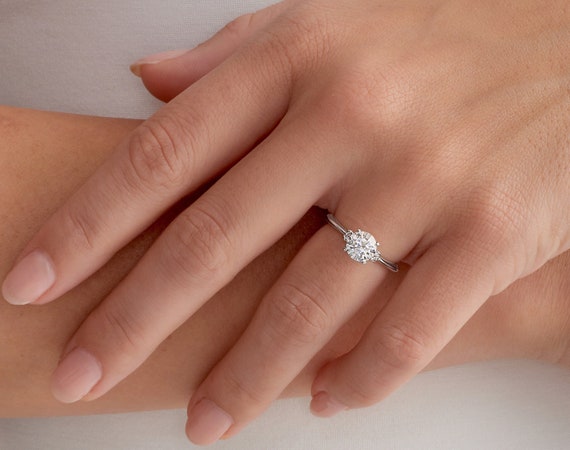Diamonds have always been a symbol of love and beauty. But today, more people are choosing lab created diamonds—also called lab made diamonds—for their special pieces. Why? Because these diamonds offer the same sparkle as mined ones, but are kinder to the planet and often more affordable.
Let’s explore why lab grown diamonds are a smart choice, how they are made, and how they fit beautifully into items like diamond rings, necklaces, and bridal sets.
What Are Lab Created Diamonds?
Lab created diamonds are real diamonds. They have the same chemical and physical properties as natural diamonds. The only difference is how they are formed. Instead of forming deep under the earth over millions of years, these diamonds are grown in a lab using advanced technology.
There are two main ways to make lab grown diamonds: HPHT (High Pressure High Temperature) and CVD (Chemical Vapor Deposition). Both methods create diamonds that look just like natural ones. They are cut, polished, and graded in the same way too.
Why Choose Lab Made Diamonds?
There are several great reasons to choose lab made diamonds:
-
Eco-Friendly: Mining for natural diamonds can harm the earth. Lab made diamonds don’t need mining, so they’re a greener option.
-
Ethical: Lab diamonds don’t come from conflict zones, so you know they are conflict-free.
-
Affordable: Lab created diamonds usually cost 30–40% less than mined diamonds. This means you can get a larger, better-quality stone for the same price.
These reasons make lab made diamonds a popular choice for people who want beautiful jewelry with a clear conscience.
Lab Diamonds in Jewelry
Lab created diamonds can be used in many types of jewelry. From everyday wear to special occasions, they fit every style.
One of the most popular choices is diamond rings. Whether you’re picking out a promise ring, a wedding band, or an engagement ring, lab grown diamonds are a perfect fit. You can find many styles—from three stone engagement rings that symbolize the past, present, and future, to diamond halo engagement rings that add extra sparkle.
If you’re looking for something truly unique, vintage lab created diamond engagement rings bring a timeless charm with a modern touch. They blend old-world design with lab-made brilliance.
And for those who like to match their entire look, a bridal diamond jewellery set with lab diamonds is stunning. These sets often include a necklace, earrings, and sometimes even a bracelet—all made to shine together.
Popular Diamond Jewelry Trends
Trends change, but lab diamonds keep up with style. Here are some pieces that are trending right now:
-
Lab grown diamond tennis necklaces are elegant and eye-catching. They feature a line of diamonds that sparkle with every move.
-
Lab grown diamond necklaces are perfect for daily wear or special events. You can find simple designs or more detailed ones with initials, charms, or colored gems.
-
Personalized jewelry is also popular. Items like diamond initials let you add your own touch to your jewelry. Whether it’s your name, a loved one’s letter, or a meaningful symbol, it adds a special feel.
-
Rose gold engagement rings Brisbane are trending too. Rose gold adds a warm, romantic color that looks beautiful with lab diamonds. Many couples in Brisbane and other cities are choosing rose gold settings to make their engagement rings stand out.
How to Take Care of Lab Created Diamond Jewelry
Caring for lab created diamonds is just like caring for mined diamonds. Here are a few easy tips:
-
Clean your jewelry gently using warm water, mild soap, and a soft brush.
-
Avoid harsh chemicals, especially when wearing rings while cleaning or swimming.
-
Store each piece separately in a soft pouch or jewelry box to avoid scratches.
-
Have your jewelry checked once a year by a professional to ensure settings are secure.
With proper care, your lab diamond pieces will shine for years to come.
Final Thoughts
Lab created diamonds are changing the way people think about fine jewelry. They are real, beautiful, and better for the earth. Whether you’re shopping for diamond rings, necklaces, or a bridal diamond jewellery set, lab made diamonds offer endless options in style and budget.
From the timeless beauty of three stone engagement rings to the charm of vintage lab created diamond engagement rings, lab diamonds let you celebrate love, style, and values all in one sparkle.
As trends like rose gold engagement rings in Brisbane and lab grown diamond tennis necklaces rise in popularity, lab created diamonds continue to shine bright in the world of fashion and romance.










)



)


